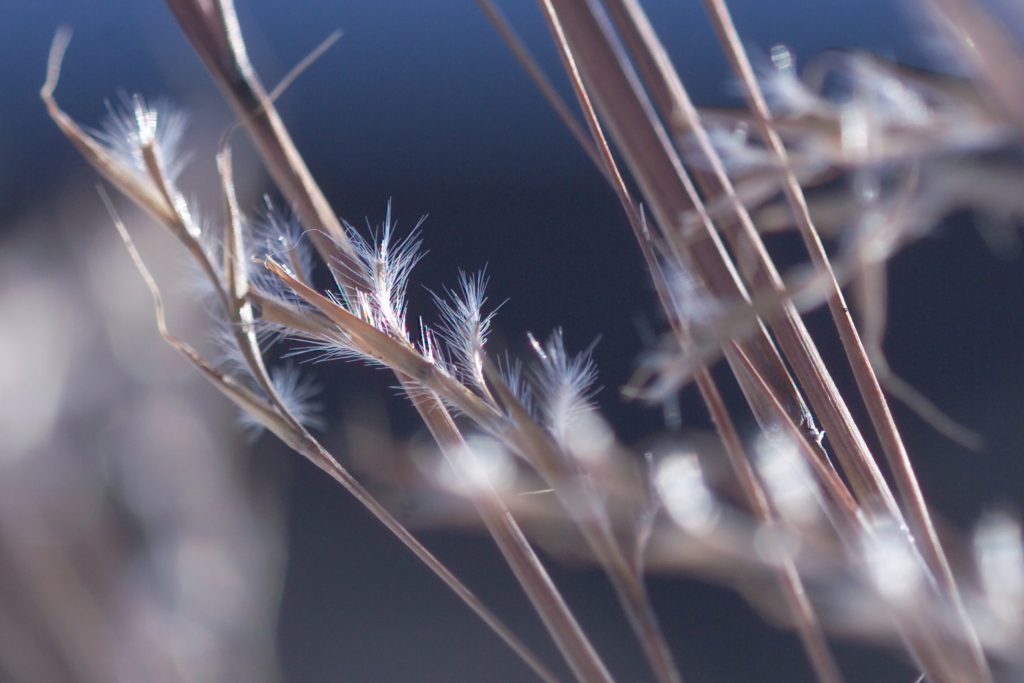Introduction
Grasses, with their lack of colorful flowers, have not always received the attention of other landscaping plants. Some gardeners think of grass as a garden weed. Others picture only a lawn when they hear the word grass. However, if you become familiar with grasses, they open up a whole new world of landscaping choices and design options.
Even without large colorful flowers, grasses have their own, unique aesthetic qualities. Grasses come in a variety of forms, colors, and textures. They give a luminous glow when backlit or during sunrise and sunset. In the wind, they sway and rustle, making the landscape come alive. The foliage of many species changes from various shades of green in the spring to yellow, red, orange, or purple in the fall, adding a seasonal aspect to a planting. Perennial grasses often hold their shapes during the winter, and their frosty forms can add unexpected excitement to a dormant winter garden.
In this eBook, we focus on native grasses, a formerly overlooked group of plants. A plant is considered “native” if it is indigenous to a given area, occurring without the aid of or introduction by humans. For this book, we are focusing on grasses native to cold climates of the central United States. We define cold climates as the USDA’s climate zones of 3 and 4, which includes Minnesota, North Dakota, South Dakota, and portions of Wisconsin, Iowa, Nebraska and Montana.
Recently, native grasses have become more popular. The appeal of ecologically-friendly gardening has grown, which has led to a higher demand for native plants and an increase in the development and selection of native grass cultivars. Native grasses are great choices for gardens that provide critical environmental functions, such as pollinator and rain gardens. Today’s gardeners realize the importance of sustainability and want their landscapes to fulfill as many ecological functions as possible, in addition to being aesthetically pleasing. As you will learn in this eBook, native grasses have many ecological benefits, so are ideal choices for sustainable gardens.
This eBook is designed to introduce landscapers, garden center employees, and gardeners to native grasses that grow well in cold climates. We have written this book so that it is approachable for those without any experience with native grasses, but with enough detail and practical knowledge so that experienced gardeners find it interesting and informative. Chapter 1 covers basic definitions of grasses and grass-like plants (we refer to this group as graminoids) and discusses botanical terminology. Chapter 2 discusses the benefits that a homeowner and the surrounding wildlife receive from native grasses. Chapter 3 lists common native grasses and sedges that are frequently sold today, their characteristics, preferred growing conditions, associated Lepidoptera, and cultivars. Chapter 4 covers planting, maintenance, and growing issues of native grasses. Chapter 5 offers suggestions on how to begin selecting native grasses for a project.

Applied to a species that occurs naturally in an area, and therefore one that has not been introduced by humans.
For the purpose of this book we defined cold climates as USDA’s climate zones 3 and 4.
After evaluating a plant for its appearance and growth, choosing to propagate it for further garden and landscape use.
a plant that has been produced from human selection or breeding
Grasses (Poaceae) and grass-like plants, such as sedges (Cyperaceae) and rushes (Juncaceae).
The order that includes butterflies and moths.

